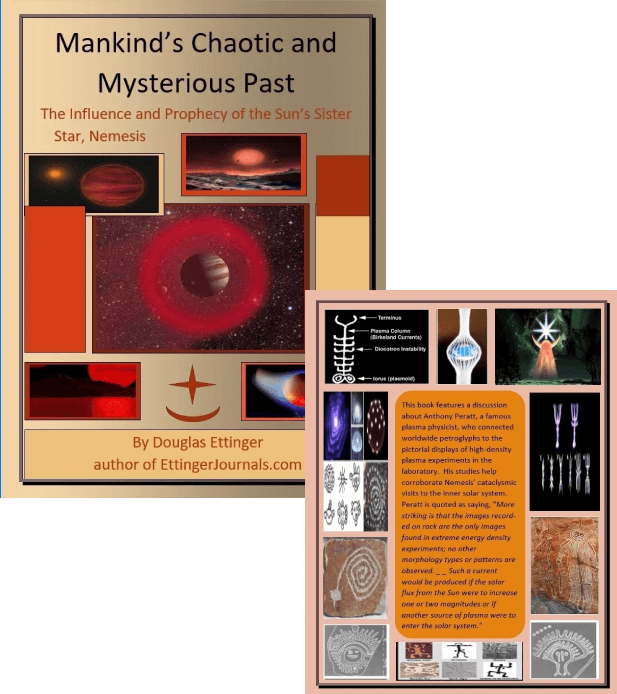The Influence and Prophecy of the Sun's Sister Star, Nemesis
The Sun has a dim sister brown dwarf star that orbits the Sun about every, 3600 years, which is not well known or believed to exist. This periodicity may differ as much as several hundred years and is not perfect due to perturbations between it and close encounters with the Sun's planets. The orbit is highly elongated and passes very quickly through the inner solar system, creating havoc with the Sun and its planets. Its suspected path comes from the Southern Hemisphere and is slightly inclined to the ecliptic plane of the Sun's planets. This dark brown dwarf can only be seen by special infrared telescopes, and astronomers have not known where to look in the sky until very recently. Of course, the star's planets cannot be visually seen until close approach because they are not illuminated by either their dim star or the Sun. The dwarf star and its planets are most of the time beyond the Kuiper Belt, where sunlight is minuscule. The star normally passes through the region between Mars and Jupiter and creates debris mainly by electrical arcing and sputtering of its strong electromagnetic discharges between itself and other nearby planets and satellites.
Popular Ideas about a Nemesis Star
This plausible star has been named Nemesis by the scientific community; the popular hypothesis is that Nemesis has an elongated elliptical orbit completely exterior to the Sun's planets and the Oort cloud, which periodically comes close enough to disturb comets or minor planets either in the Oort cloud or possibly the Kuiper Belt. Nemesis is either a red or brown dwarf star gravitationally connected to our Sun, and its distance from the solar system center is in terms of light-years. The hypothesis was developed to explain a statistically determined cyclic period for 12 mass extinction events over the last 250 million years. The Infrared Astronomical Satellite (IRAS) failed to detect Nemesis in the 1980s. The 2MASS astronomical survey failed to detect any nearby dim star in the 1990s. A more powerful infrared technology, the Wide-field Infrared Survey Explorer (WISE), can detect the more difficult brown dwarfs as cool as 150K out to 10 light-years and released its final data in 2012. No Nemesis was detected, and presently, NASA doubts that it exists. A final 2014 analysis of the WISE data has negated any Neptune-sized object existing less than 700 AU away, any Saturn-sized object existing between the Oort cloud and out to ten thousand AU, and any Jupiter size object out to 1 light year or 63,000 AU assuming their surface temperature is above the detectable limit of about 150K. Admittedly, NASA was unable to detect any Kuiper belt objects with WISE, since they fall below this temperature threshold.
NASA officially stated that "recent scientific analysis no longer supports the idea that extinctions on Earth happen at regular, repeating intervals, and thus, the Nemesis hypothesis is no longer needed." This statement only refers to claimed periodicity of 25 million or more years based on mass extinctions. Much smaller periods, such as 3600 years, are not even studied or even contemplated by NASA. This smaller period is claimed to exist by this paper and should be properly identified as the "Sitchin Hypothesis," naming the idea after its originator.

